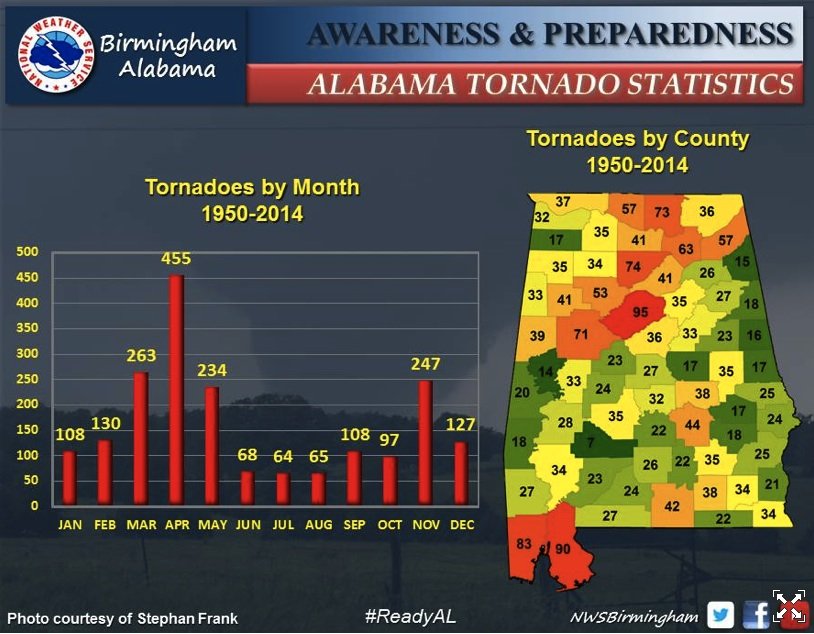Tornadoes can be a dangerous and destructive force of nature, and for those living in Alabama, it’s important to be informed about tornado season. While tornadoes can occur at any time of the year, there are certain periods when the risk is higher in this region. In this article, we will explore when tornado season typically occurs in Alabama, what factors contribute to tornado formation, and how to stay safe during these turbulent times.
**When is tornado season in Alabama?**
In Alabama, tornado season typically occurs from late winter to early summer, with the peak months being March, April, and May. During this time, the state experiences an increased frequency and intensity of tornadoes. This is due to the clash of warm, moist air from the Gulf of Mexico with cool, dry air from the north, creating an ideal environment for severe thunderstorms and tornado formation.
Understanding the factors contributing to tornado formation
Tornadoes form when certain atmospheric conditions come together in a specific way. While tornadoes can occur throughout the year, tornado season in Alabama is particularly active due to the convergence of several factors:
1. Warm, moist air
During tornado season, warm, moist air from the Gulf of Mexico flows into Alabama, bringing with it high levels of humidity. This warm air acts as fuel for severe thunderstorms, creating the necessary energy for tornado formation.
2. Cold fronts
Cold fronts from the north often collide with the warm, moist air, resulting in the formation of powerful thunderstorms. These collisions create unstable atmospheric conditions, increasing the likelihood of tornadoes.
3. Atmospheric instability
During tornado season, the collision of warm and cold air masses creates a stark temperature contrast. This temperature difference, combined with wind shear (a change in wind speed and direction with height), creates a highly unstable atmosphere, providing the necessary conditions for tornadoes to develop.
4. Topography
The unique topography of Alabama, with its rolling hills and varying land elevations, can also contribute to tornado formation. Changes in elevation can enhance atmospheric instability, further increasing the risk of tornadoes.
Staying safe during tornado season
During tornado season, it is crucial to be prepared and take steps to ensure your safety. Here are some important tips to keep in mind:
1. Have a plan
Create a detailed emergency plan for your household that includes a designated safe area where you can take shelter during a tornado. Make sure everyone in your family knows the plan and understands what to do in case of an emergency.
2. Stay informed
Pay close attention to weather forecasts and updates from local authorities. Keep a battery-powered weather radio or smartphone app that provides real-time weather alerts, so you are aware of any tornado warnings in your area.
3. Identify safe shelter locations
Identify the safest areas in your home or workplace where you can seek shelter during a tornado. Basements, storm cellars, or interior rooms on the lowest level of the building, away from windows, are ideal options.
4. Prepare an emergency kit
Assemble an emergency kit with essential supplies such as non-perishable food, water, flashlights, batteries, a first aid kit, and any necessary medications. Keep the kit easily accessible in case of an emergency.
5. Practice drills
Regularly conduct tornado drills with your household or workplace to ensure everyone knows how to respond quickly and safely in the event of a tornado. This practice will help reduce panic and increase preparedness.
6. Monitor the weather
Keep an eye on the sky and be vigilant for signs of severe weather. Dark clouds, rotating or lowering clouds, and a loud, continuous roar similar to a freight train can indicate the presence of a tornado. Take immediate action if you observe any of these signs.
7. Take shelter immediately
If a tornado warning is issued or if you suspect a tornado is approaching, seek shelter immediately in your designated safe area. Stay away from windows and protect yourself by covering your head and neck with your arms or by using a mattress or heavy blankets as a shield.
8. Stay informed after the storm
Even after a tornado has passed, it’s important to stay informed about the situation. Be cautious of downed power lines, damaged structures, and any other potential hazards. Follow the instructions and guidance of local authorities as they work to restore safety and normalcy.
Frequently Asked Questions
Q: Can tornadoes occur at other times of the year in Alabama?
A: While tornado season in Alabama typically occurs from late winter to early summer, tornadoes can occur at any time of the year. However, the risk is higher during the peak months of March, April, and May.
Q: How common are tornadoes in Alabama?
A: Alabama experiences a high frequency of tornadoes compared to many other states in the United States. It is part of the region known as Tornado Alley, which stretches from Texas to Alabama and has a higher concentration of tornado activity.
Q: What should I do if I am driving during a tornado?
A: If you are driving and encounter a tornado, do not try to outrun it. Instead, seek shelter immediately in a sturdy building or, if that is not possible, find a low-lying area such as a ditch and protect your head and neck.
Final Thoughts
Tornadoes are a natural phenomenon that can pose a significant threat to life and property. Understanding when tornado season occurs in Alabama, the factors contributing to tornado formation, and how to stay safe during these turbulent times is essential for the well-being of individuals and communities. By staying informed, being prepared, and taking appropriate action, we can minimize the risks and navigate tornado season with caution and resilience. Stay safe!
